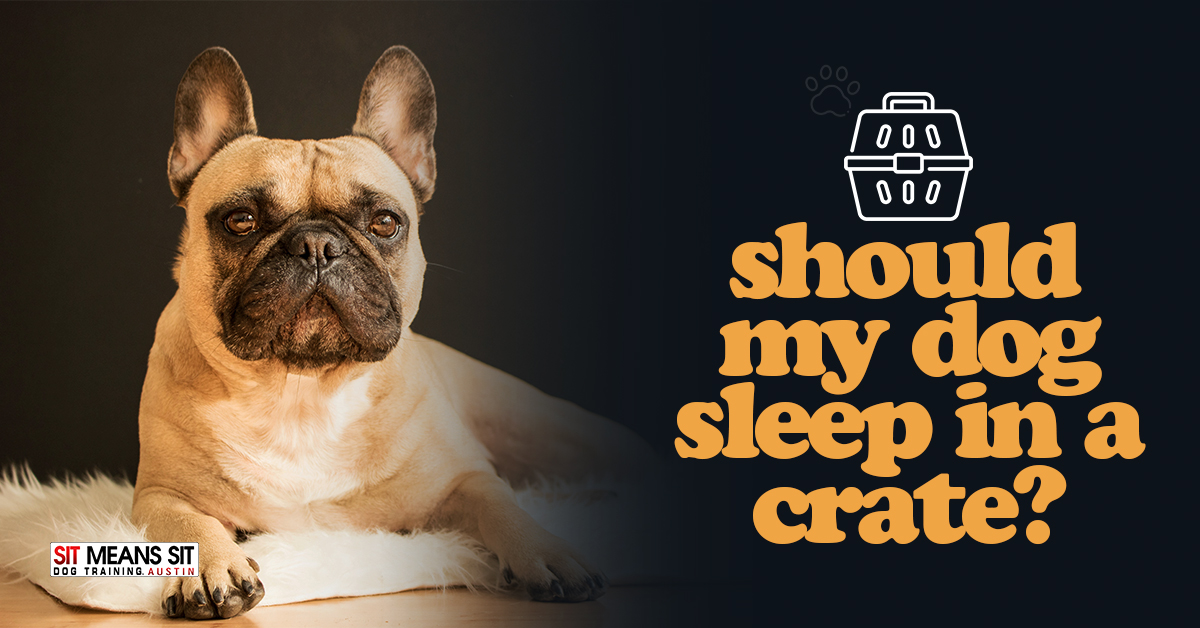
Should My Dog Sleep in a Crate?
Finding the best dog sleeping arrangements is a common challenge for canine owners. Many of us have wondered if our dogs should sleep in a crate or not. There are so many options, from crates to your bed or their own dog beds. Each method has its own benefits, and we’re here to help you understand each of them.
Choosing the Right Sleeping Arrangement for Your Dog
Finding the ideal sleeping arrangement for your dog is as important for their health and well-being as it is for yours. An effective sleeping space provides your dog with a sense of security, proper rest and comfort, which are all essential for their overall happiness.

Whether you choose a bed or crate — or allow them to cuddle up next to you in your bed — understanding the benefits and potential drawbacks of each option can help you make the best decision for your furry friend.
Benefits of Crate Training
Crate training is a popular method among dog owners for providing a safe, designated space for their dogs. It mimics the natural denning instincts of dogs, offering them a cozy and secure environment to rest. Crate training can also be an effective tool for house training, preventing destructive behaviors and helping dogs feel calm during stressful situations like travel or vet visits. Training your furry friend to sleep in a crate at night teaches them to control their bladder and bowels, as they don’t relieve themselves in the same space that they sleep.
A crate offers puppies a structured environment to ease their transition into a new home. For adult dogs, it provides a familiar, comforting space where they can retreat when they want. Over time, your pooch will see the crate as their personal space that provides them with safety.
Crate Training Puppies vs. Adult Dogs
The process of crate training varies between puppies and adult dogs. Puppies are generally more adaptable and can learn to view the crate as a positive space from an early age. With patience and consistency, puppies can quickly associate the crate comfortably and safely.
Adult dogs, however, may require more time to adjust, especially if they have never been crate-trained before. Older dogs might be more resistant to entering a crate, but with positive reinforcement and a gradual introduction, they, too, can learn to appreciate the benefits of crate training.
Crate Training Tips
When using a dog crate, it’s important to prioritize safety. The crate must be the right size, allowing your dog to stand, turn around and lie comfortably. When starting your crate training journey, avoid leaving your dog in the crate for extended periods. Begin with a gradual introduction and increase your dog’s time in the crate over time.
Never use the crate as a form of punishment. The crate should be a safe, comforting space for your pup. You do not want to create a negative association with the crate and undermine the training process.
When training your dog, provide them with soft bedding and access to water. You want the space to feel warm and cozy for your pup.
Sharing Your Bed
Sharing your bed with your dog is a common practice. While this can strengthen the bond between you and your pet, it’s not always the best option for every dog or owner.
Here are some things to keep in mind if you’re sharing your bed with your pup:
- Dogs don’t sleep through the night: If you’re a light sleeper, consider an alternative sleeping approach for your pup. Canines don’t sleep through the night. They shift, move, kick, readjust, jump off the bed, jump back on and more.
- Dogs roam through the night: Some pups like to roam and explore the house at night. If your pup is a nocturnal home explorer, consider crate training them instead.
- Dogs relieve themselves at night: Dogs who aren’t house-trained might leave you an unwelcomed gift in the middle of the night. If this is the case, they should not sleep in your bed but rather be crated.
If you have a well-trained pooch and allow them to sleep in your bed, that is fine! Just make sure you’re comfortable and receive an uninterrupted, good night’s sleep, too.
Dog Beds as an Alternative
Dog beds are a great alternative, providing your dog with a comfortable space without taking over your bed. High-quality dog beds can support your dog’s joints, especially as they age. Dog beds come in various styles and sizes to suit your dog’s needs. They are also easy to clean and can be moved around the house, giving your dog a familiar spot to relax in the bedroom, living room or study!
There are dog beds made with cushions and baskets. They can have raised, rounded, flat or plush surfaces. Some are designed to look like real home furniture and blend with your decor.
While you can’t force your pooch to sleep in a dog bed or on your bed with you, it’s important to introduce them to the various options. Ultimately, as long as you and your pup are sleeping well, it doesn’t matter where they sleep.
Learn How to Crate Train Your Dog With Sit Means Sit Austin
For personalized advice on crate training and other dog training needs, contact our team at Sit Means Sit Austin. Our team of experts can help you create a sleeping arrangement that suits you and your fur baby!

